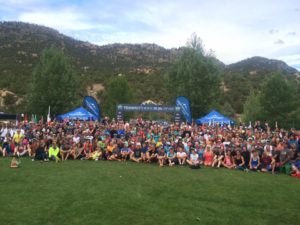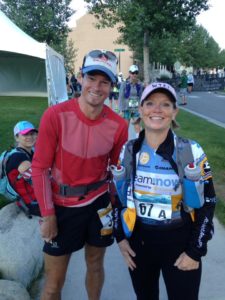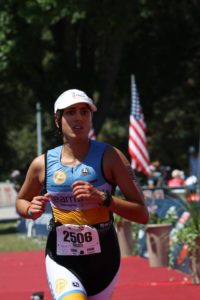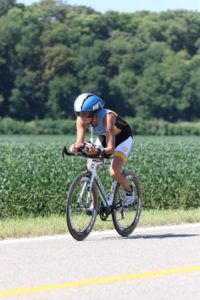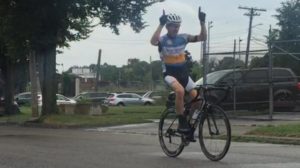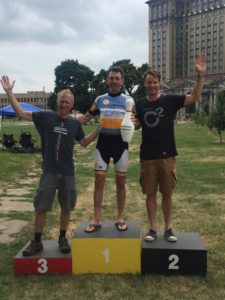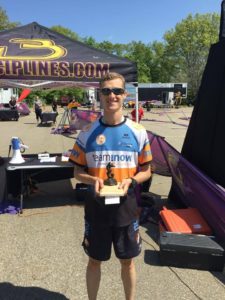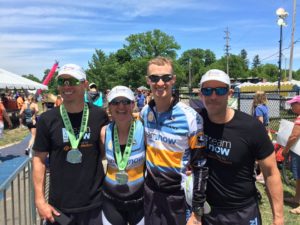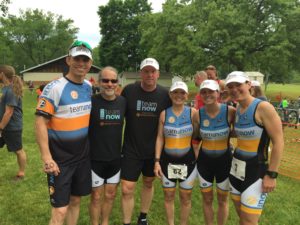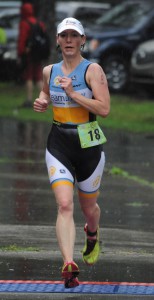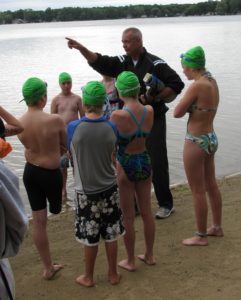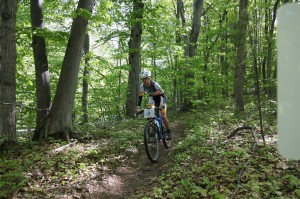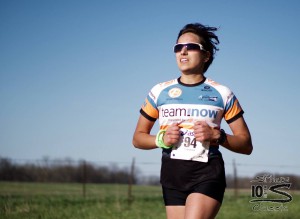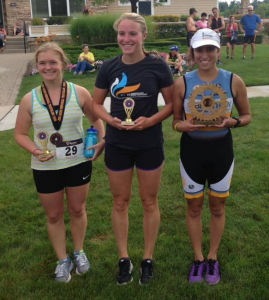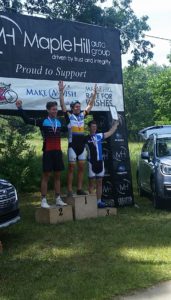–By Kathy Braginton, Team OAM NOW triathlete
As August rolls around, there is an abundant list of great local races. So many, in fact, you could race every weekend in August, both Saturday and Sunday on some weekends. I like having so many options, but how do you choose? One long standing local race is Shermanator. The Shermanator Triathlon is a fund raising event for the Community Scholarship Program of the Sherman Lake YMCA in Augusta, Michigan. With the saturation of local triathlons to choose from, Shermanator has seen the race participation decline over the years. But as the participation has declined, this race venue has only gotten better. At one time, this venue had the weediest lake I have ever had the opportunity to swim. With the weeds so thick in places, you could grab them and use them to pull your way through the water. The country roads on the bike course had been patched and re-patched numerous times. With the possibility that some holes hadn’t been patched at all, riders had to use extreme caution on the bike. Over the last few years, there have been numerous changes on the swim and bike legs of the race. With a weed abatement program that has been put in place in the lake, I never saw or felt a single weed! The bumpy roads have all been repaved making it a super fast course for a Sprint Tri. Shermanator is also an unsanctioned event; therefore, it is always wet suit legal.
After focusing on long distance races the first half of the season, I shifted my training focus on building speed for the Sprint races at the end of the season. I have had several top finishes at Shermanator over the years, but an overall win has eluded me at this race. One advantage to racing local is you know your competition well going into the race. I knew I needed to keep the swim close, make up as much time on the bike as I could, and hope it didn’t come down to a foot race on the run. Unfortunately, that is how it played out and I had a 30 second deficit as I started the run leg. While I gradually reduced the deficit on the run, it wasn’t quite enough and I missed the win by 16 seconds.
So, still in search of the big W this season, I made the last minute decision to race Three Rivers Tri. This race played out similar to Shermanator and, sadly, I was not able to keep the swim close enough. I made up the deficit on the bike and was able to exit T2 in the lead. However, the lead did not last long and I was quickly over taken on the run. I wound up second overall to a woman visiting from Pennsylvania. She was racing Three Rivers as a warm up for the Full Ironman at MiTi the following day.
While I was not able to walk away from the 2016 Tri Season with a win, I was, unexpectedly, able to walk away with so much more. During the awards ceremony at Three Rivers, my sister pointed out a 13 year old finisher that had been racing alongside her. We listened as they called her 15 year old sister to the top position on the podium. We expected to hear the younger sister’s name called next, but no more Age Group names were announced. We watched as the young girl walked away with a look of disappointment. It turns out Age Group awards were only given to 14 and older participants. While she had actually finished ahead of her older sister, she would not be receiving an award. That weighed on me as I walked away from the awards presentation. I ran into the 2 young girls in transition as we were picking up our gear, and it hit me as to what I needed to do. Three Rivers marked my 55th triathlon. I have a basement full of medals and trophies and this young girl did not deserve to walk away empty handed. She was a winner and ought to be recognized! I walked over to her, took my medal from around my neck, and told her I wanted her to have it. She initially said no, but I didn’t give her much choice in the matter, and placed the medal around her neck. She told me this was her very first triathlon and I told her I wanted her love the sport as much as I did.
As I drove home, I felt a totally different sense of victory. A win doesn’t always mean finishing in first place. Sometimes coming home with no medal at all, can be the biggest win of them all.






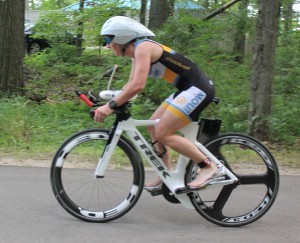
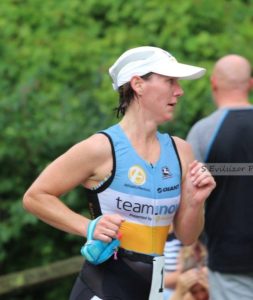
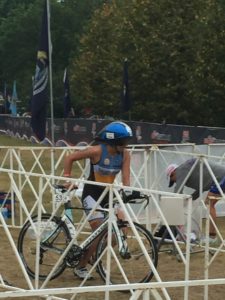
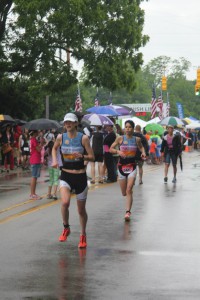 from racing Olympic distance to Half Iron is a big one. I suggest a season dedicated to a build where you start with a solid training plan, and ending with your Half Iron event. A lot changes when you increase your longest race distance by 100%. Such a jump in distance requires, more precise training and recovery, nutrition, support at home, sleep, and a number of other things.
from racing Olympic distance to Half Iron is a big one. I suggest a season dedicated to a build where you start with a solid training plan, and ending with your Half Iron event. A lot changes when you increase your longest race distance by 100%. Such a jump in distance requires, more precise training and recovery, nutrition, support at home, sleep, and a number of other things.